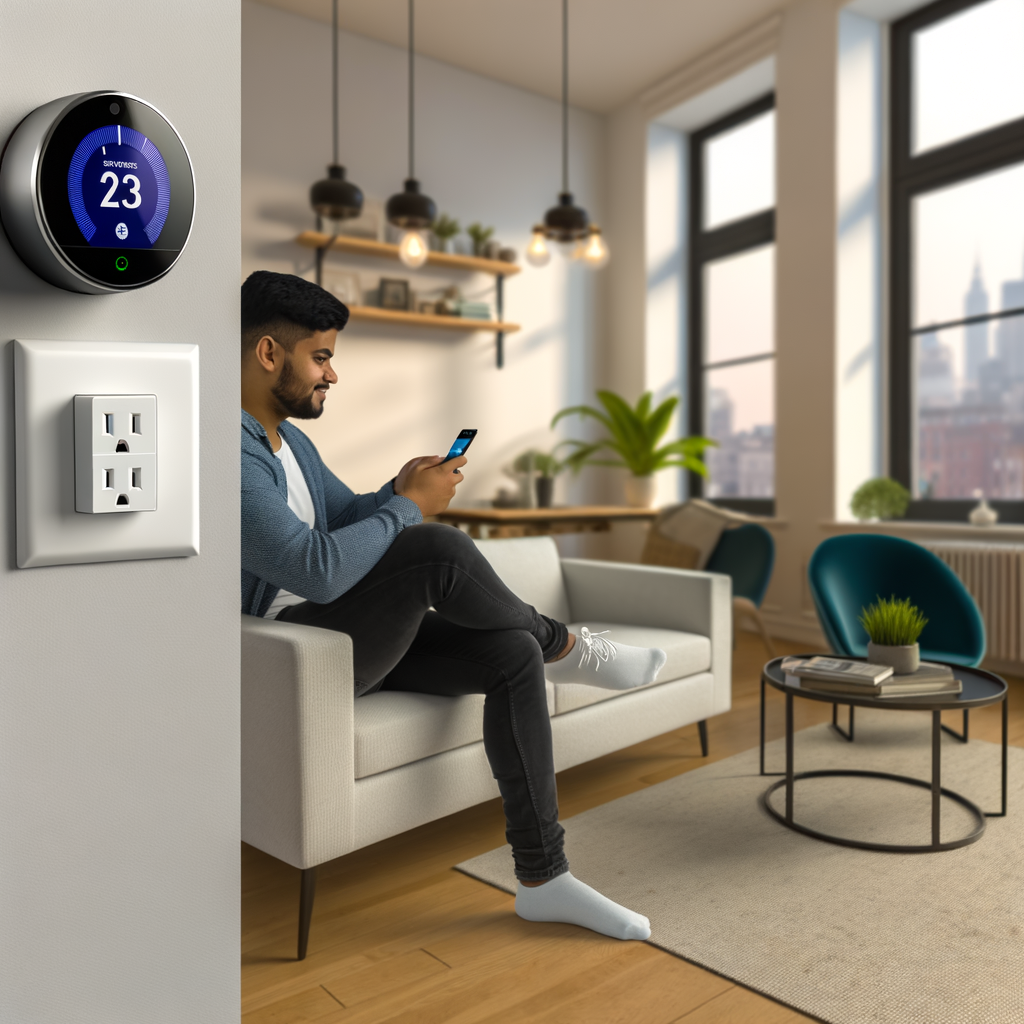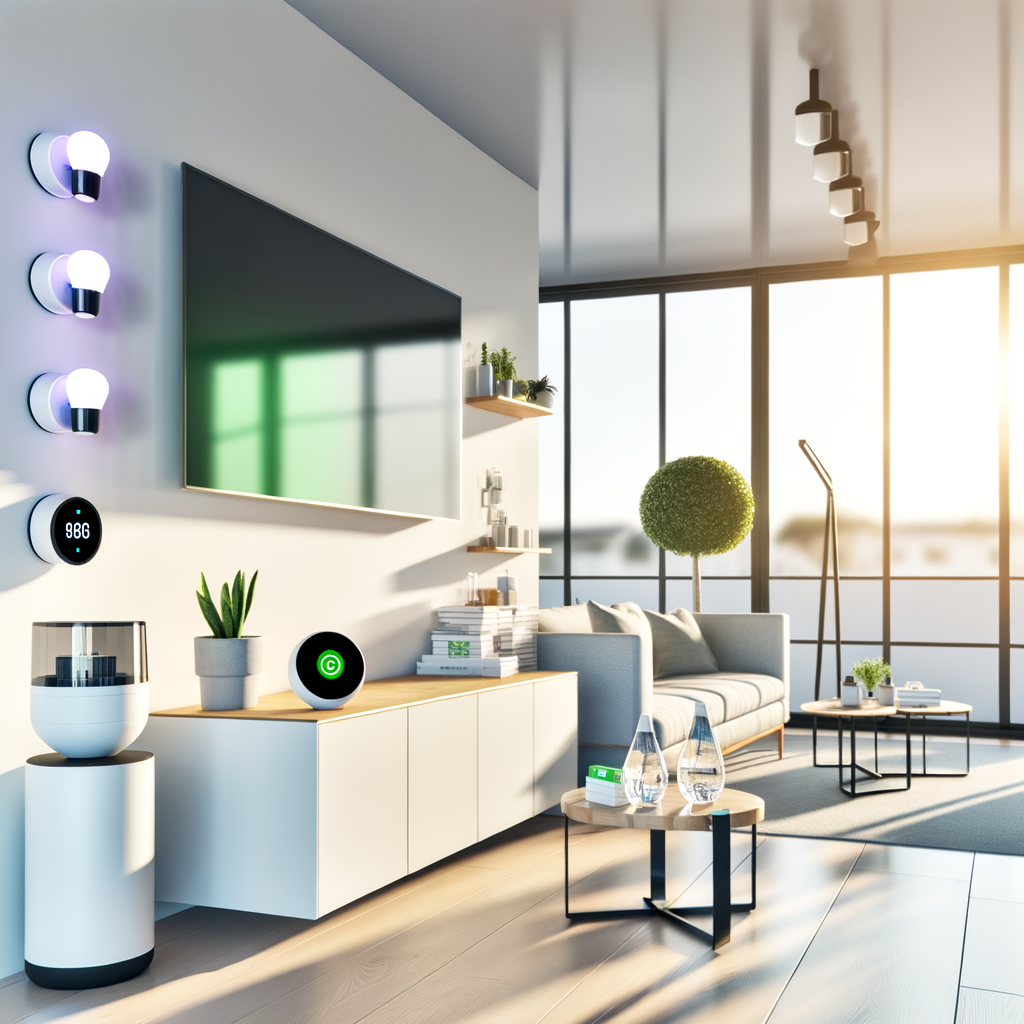Smart Savings: How Renters Can Use Plug-In Smart Thermostats to Cut Energy Bills and Live Greener
Saving money while reducing your ecological footprint used to require sacrificing comfort or investing in permanent upgrades. But today, smart technology puts renters in the driver’s seat of energy savings—no drill or landlord approval required. Plug-in smart thermostats offer a renter-friendly, non-invasive way to control heating and cooling, cut utility bills, and lower your carbon emissions.
In this guide, we’ll break down everything renters need to know about plug-in smart thermostats: how they work, which systems they’re compatible with, practical installation tips, and daily habits to maximize savings—without jeopardizing your lease.
What Are Plug-In Smart Thermostats?
A plug-in smart thermostat is a portable temperature control device you plug directly into a standard wall outlet. Unlike traditional smart thermostats that require hardwiring to a home’s central HVAC system (and likely your landlord’s permission), plug-in models communicate with portable heaters, window ACs, or space heaters using wireless technology and smart plugs.
- No rewiring or drilling: Set up is simple—plug in and play.
- Ideal for renters: Take your thermostat with you when you move.
- Remote control: Manage temperature and scheduling via apps or voice assistants.
- Tracks usage: Monitor energy use and adjust settings for maximum savings.
Designed for flexibility, plug-in smart thermostats work particularly well in apartments with baseboard heaters, window units, portable ACs, or space heaters—especially where a central thermostat isn’t accessible.
Why Renters Should Care About Smart Thermostats
With energy prices on the rise, controlling your heating and cooling is one of the fastest ways to save money and reduce your apartment’s carbon footprint. Here’s why embracing smart thermostats is a no-brainer for eco-minded renters:
- Immediate savings — The U.S. Department of Energy reports that you can save up to 10% a year by simply turning your thermostat back 7-10 degrees for 8 hours a day.
- Hands-off comfort — Smart thermostats learn your routines, making comfort automatic with scheduling and geofencing.
- Reduce waste — No more heating or cooling an empty home. Lower emissions right from your rental.
- No landlord hassles — No permanent changes to your unit and no risking your security deposit.
How Plug-In Smart Thermostats Work in Rentals
There are two main categories of plug-in thermostats for renters:
- Smart Plugs + Room Thermostats: The thermostat senses the temperature and sends an on/off command to a smart plug, which powers your heater or window AC.
- All-in-One Smart Controller: A standalone device with a built-in sensor and plug. Just plug your appliance directly into it, set your preferences, and go.
Common Compatible Appliances
- Portable space heaters
- Window air conditioning units
- Portable electric radiators
- Fans or evaporative coolers
- Plug-in baseboard heaters (check amp rating and manufacturer guidance first)
Note: These systems won’t replace central (ducted) heating and cooling thermostats—but they work wonders for zoned comfort in studios, apartments, or rooms where you have control over a device-powered unit.
Setting Up a Plug-In Smart Thermostat: Step-by-Step
Getting started is simple—no tools required. Here’s how to upgrade your comfort in about 15 minutes:
- Choose the right device for your needs and compatible appliance (see our recommendations below).
- Plug the smart thermostat in to a wall socket within range of your AC or heater.
- Plug your appliance into the thermostat or its connected smart plug.
- Connect to Wi-Fi using the manufacturer’s app. (Most products support Alexa, Google Assistant, or Apple HomeKit.)
- Set schedules, temperature triggers, or routines through the app.
- Position the thermostat away from direct sunlight, drafts, or devices that emit heat for accurate readings.
Pro Tips for Renters
- Test placement: Use an indoor thermometer to confirm your smart thermostat is in a good location—a central spot at chest height works best.
- Voice assistant integration: Link with Alexa or Google for hands-free control.
- Monitor energy tracking features: Check weekly reports to fine-tune savings.
- Safety first: Always ensure your appliance’s power draw does not exceed the smart plug or thermostat’s rated capacity.
Maximizing Energy Savings with Plug-In Smart Thermostats
Plug-in smart thermostats are powerful, but your habits make all the difference. Combine smart tech with these up-to-date practices for the biggest impact:
1. Set Smart Schedules
- Reduce heating/cooling when away: Use scheduling or geofencing (location-based triggers) to lower temperature when no one’s home.
- Precision comfort: Program separate “Home,” “Away,” and “Sleep” settings.
- Early start: Let your device start warming or cooling the space 30 minutes before you return.
2. Optimize Your Temperature Setpoints
- Heating: Set your thermostat to 68°F (20°C) during the day and lower it by 7-10°F at night or when you’re away.
- Cooling: Aim for 78°F (26°C) when home and even higher (85°F) when gone.
3. Use Energy-Saving Modes
- Eco/Auto-Away: Automatically sets back temperature settings when you’re not there.
- Adaptive learning: Some models adjust to your habits for continuous improvement.
4. Seal and Insulate Your Space
- Draft stoppers: Block cold or hot air from leaking under doors and windows.
- Weatherstripping: Temporary adhesive options are perfect for renters.
- Smart thermostats + insulation: The right combo slashes bills and boosts comfort.
5. Leverage Usage Reports
- Monitor patterns: Most smart thermostats provide energy use data and savings insights.
- Compare months: Identify which changes have the biggest payback.
6. Educate Roommates or Family
- Share app access: So habits aren’t working against your savings goals.
- Agree on schedules: For shared spaces, pick settings everyone can live with.
Living Greener: The Eco-Benefits of Smart Thermostat Use
Smart thermostats don’t just trim your monthly bills—they’re a cornerstone of a low-carbon lifestyle, even if you rent. Here’s how they make a difference:
- Reduced energy waste: Most households overheat or overcool without realizing it. Smart thermostats automatically prevent this.
- Lower greenhouse gas emissions: Less fossil fuel burned = a lighter carbon footprint.
- Insight for the future: Seeing the real-world impact incentivizes further eco-friendly changes, from LED bulbs to unplugging unused devices.
As more utilities roll out time-of-use rates or




